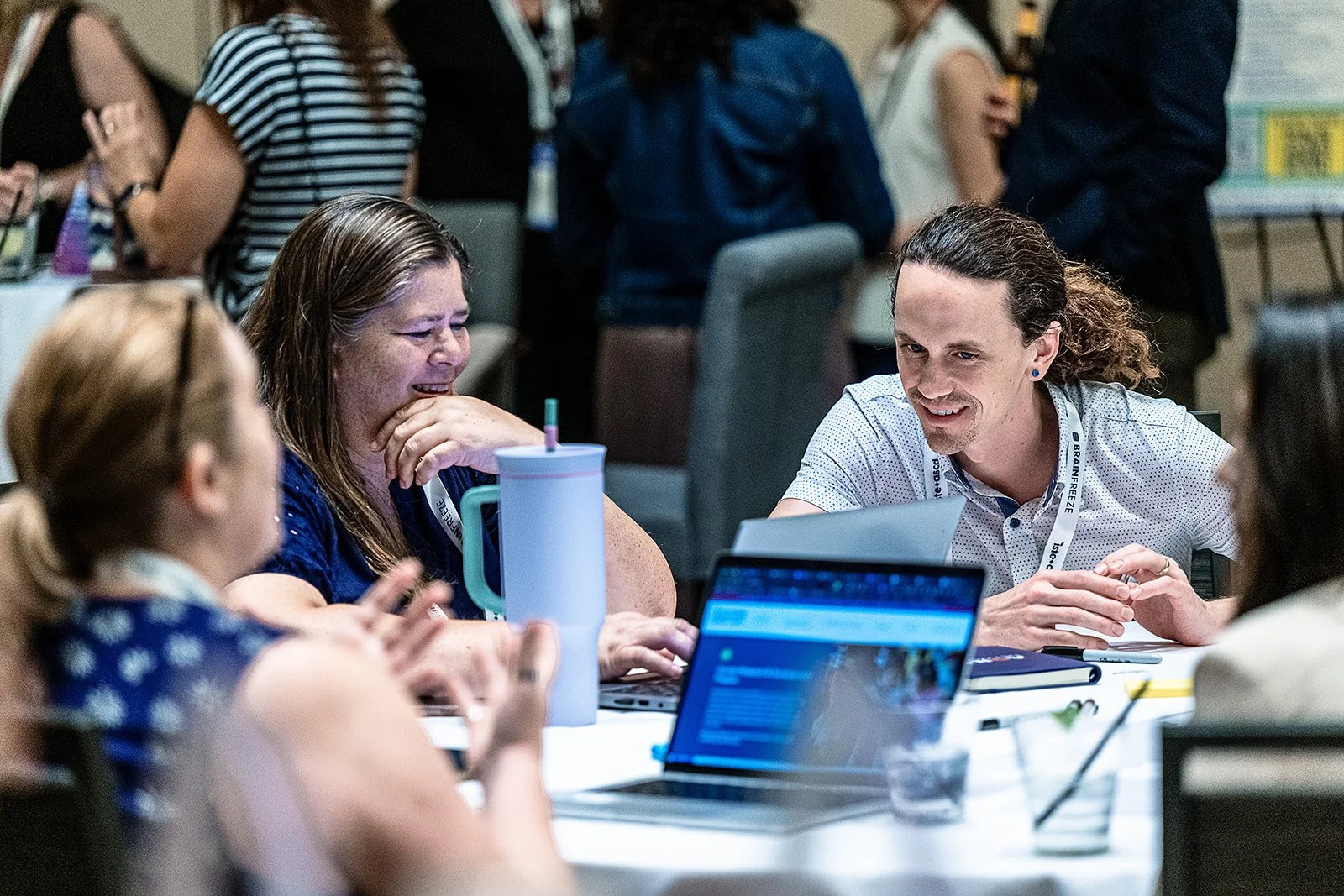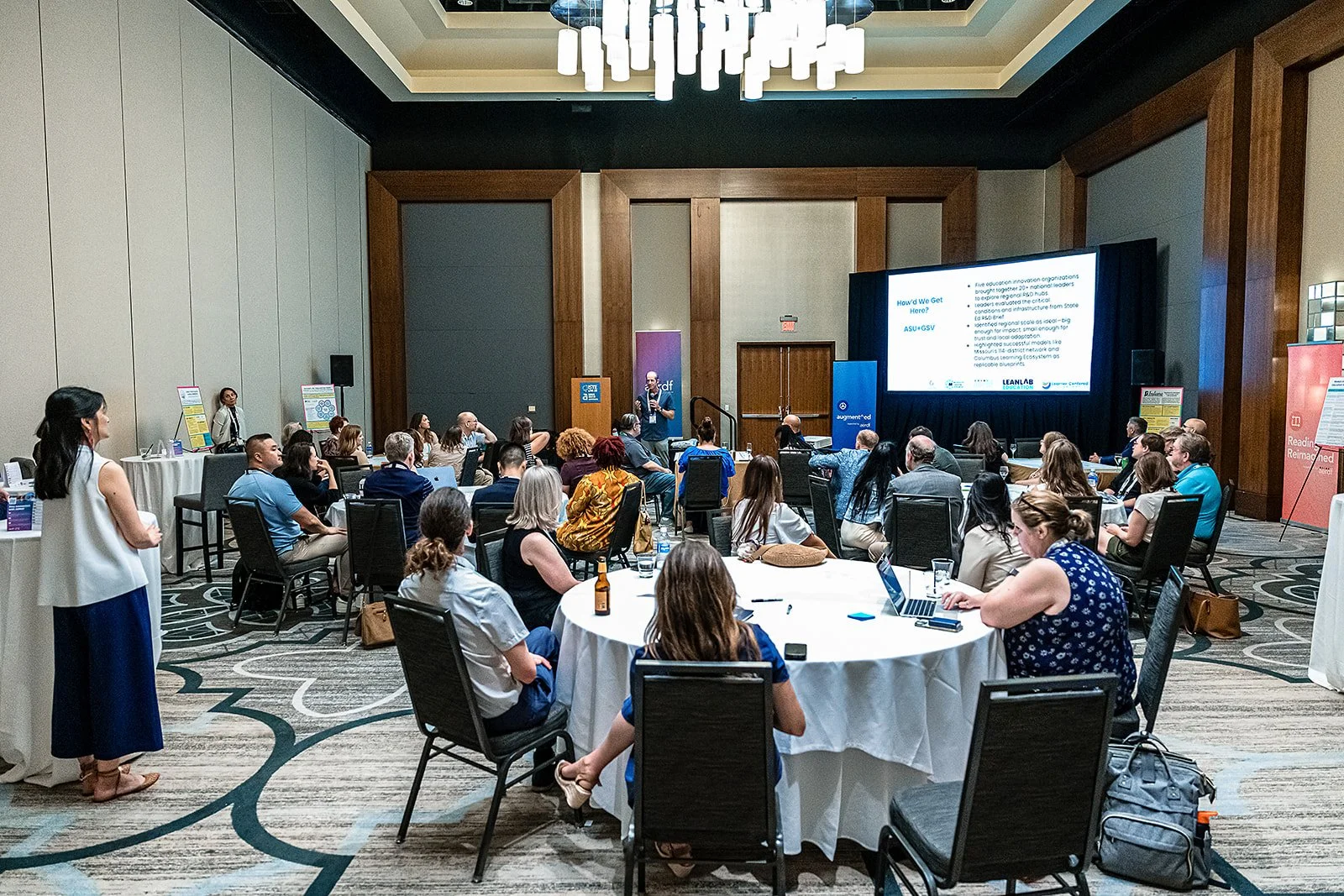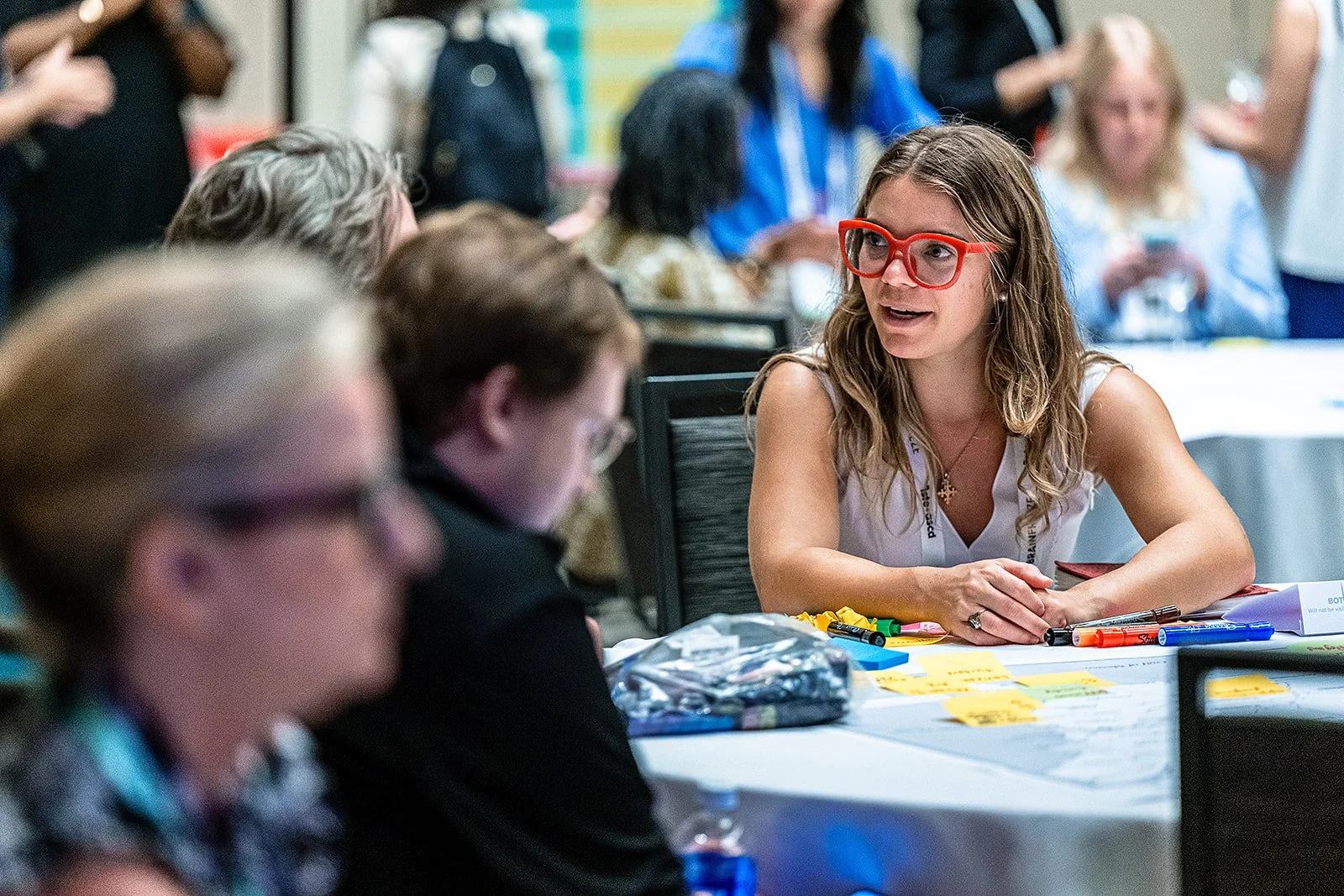Co-Authored by Leanlab Education, AERDF, ALI, InnovateEDU, and Learner-Centered Collaborative.
The traditional landscape of education innovation often feels siloed. Researchers conduct studies, edtech startups build tools, investors inject capital, and educators are left at the tail end, hoping something works for their students. This incoherent marketplace, where solutions often lack substantial evidence of their effectiveness and are built without a deep understanding of the problems, was the central challenge addressed during the session “Uncovering the Hidden Gems: A State and Regional Deep Dive into R&D” at this year’s ISTELive and ASCD Annual Conference with Advanced Education Research and Development Fund (AERDF), Leanlab Education, Learner-Centered Collaborative, Alliance for Learning Innovation (ALI), and InnovateEDU.
Over 100 visionary leaders explored the possibilities for innovation hubs that enable more collaborative learning and experimentation, aligning with each community’s unique needs and strengths. Together, the group uncovered promising state and regional gems of innovation where more learner-centered education along with research and development (R&D) infrastructures are being created with communities of schools, teachers, and learners. These hubs, envisioned as collaborative ecosystems that span cities and states, unite local educators, researchers, technologists, and community leaders to foster innovation and drive progress. They offer a framework for collaborative learning, experimentation, and progress, tailored to each community's unique needs and strengths.
This ISTE+ASCD session built on previous collective work among the coalition of the five education innovation organizations at ASU+GSV 2025. There, over 20 national leaders gathered to explore the promise of such state and regional innovation hubs in helping communities prepare for future educational challenges. Guided by the "Seizing the Opportunity for State Education R&D" brief—published by ALI, Transcend, and Education Reimagined—participants evaluated the urgency and importance of its eight recommendations for developing these regional hubs.
A Collaborative Ecosystem for True Innovation
The ISTE+ASCD session kicked off with an opening from Joseph South, Chief Innovation Officer, ISTE ASCD, welcoming attendees and inviting them to discover where education innovation is already thriving and join fellow educators and leaders from across the country to map these breakthrough initiatives across the country.
Next AERDF CEO Auditi Chakravarty shared the organization’s powerful vision for sparking breakthroughs in education. AERDF’s approach draws inspiration from successful advanced R&D models in energy, health, and defense and enhances those models by starting with a collaborative ecosystem where teachers, learners, and practitioners are engaged from the outset. This isn't just about collecting feedback; it's about co-designing and co-developing solutions through iterative cycles of research informing development and vice versa. AERDF focuses on the "front end of scientific discovery and invention," seeking the fundamental new science or technical capabilities needed to solve persistent, complex problems in education.
This commitment to deeply integrated R&D extends throughout the sector. Devin Vodicka, Co-Founder and Co-CEO of Learner-Centered Collaborative, articulated his organization’s vision for “education ecosystems where all learners know who they are, thrive in community, and actively engage in the world as their best selves." He emphasized that R&D takes many forms, from tech-enabled products to human development and data systems.
Devin Vodicka, Co-Founder and Co-CEO of Learner-Centered Collaborative, presenting at ISTELive 2025
Devin then transitioned the room into an interactive activity, challenging attendees to identify "innovation gems" across the United States. This exercise highlighted a key insight: these gems are all powered by state and regional innovation hubs. As Devin explained, there's a "sweet spot" where these hubs are "big enough to impact systems and small enough to build trust and adapt to local contexts." This regional focus allows for meaningful change that is both scalable and deeply contextualized to local needs.
Bright Spots
Katie Boody Adorno, Founder and CEO of Leanlab Education, provided a compelling example from her hometown, Kansas City. She highlighted the work of Liberty Public Schools and the Success-Ready Students Network across Missouri. This grassroots movement is reimagining assessment by shifting away from traditional, standardized tests toward competency-based approaches that truly honor learning, whether it happens in a classroom or out in the field. This regional effort, driven by educators and community needs, is a testament to the power of localized innovation.
Treah Hutchings from InnovateEDU further demonstrated the power of "networks of networks," catalyzing change by connecting diverse stakeholders. Their work spans policy, technology, and capacity building, bringing people together to develop policy around AI adoption, improve data infrastructure, and advance inclusive practices for students with disabilities.
Timothy Michalak from the Alliance For Learning Innovation (ALI) rounded out the discussion by emphasizing the importance of policy at the federal and state levels that encourages innovation and data collection. He shared insights from ALI’s research identifying state policies that drive R&D, emphasizing that innovation isn't pursued for its own sake, but for the benefit of student outcomes.
Co-Creating the Future of Learning
The overarching message of the session was clear: the context of PreK-12 public education is changing rapidly, with pressures ranging from AI integration to teacher shortages. It's up to us as educators, researchers, policymakers, and learners to co-create something new and different if we are serious about the success of every learner.
Session participants engage in an innovation mapping activity at ISTELive 2025
The mapping activity, where attendees identified bright spots and regional hubs of innovation across the country, was a powerful affirmation of this collaborative spirit. It showcased that innovation is happening everywhere, in "blue states, red states, purple states." By identifying and connecting these "innovation gems," the hope is to accelerate progress and build a future of education that is truly responsive and learner-centered.
Here are a few of the innovation gems identified in the room:
Blueprint for Maryland’s Future: The Blueprint for Maryland’s Future will transform public education in the state into a world-class education system by increasing state funding for education over the next 10 years, enriching student experiences and accelerating student outcomes, as well as improving the quality of education for all children in Maryland. The Blueprint is a product of the recommendations made by a cross-section of stakeholders including education advocates, teachers, legislators, and experts to address education funding and needed approaches to better prepare students for success in the modern workforce.
Ohio’s AI Summits: Ohio educators joined sold-out AI Summits to learn about AI literacy and its effective implementation in the classroom. Hosted in partnership with aiEDU, the Ohio Educational Service Center Association (OESCA), the Montgomery County Educational Service Center (MCESC), Future Forward Ohio, and the Nord Family Foundation, the events brought together educators from across the state to learn and share ideas around AI. Key takeaways emphasized the importance of AI as a supportive tool, the need for continuous learning, and the necessity of empowering educators and students with a clear understanding of AI literacy, as well as the need to handle AI use responsibly and ethically.
The Pennsylvania Department of Education's Career Ready PA initiative, in collaboration with Remake Learning Days, is actively strengthening the state's educational landscape. This partnership is dedicated to cultivating a highly educated and skilled workforce. While Career Ready PA focuses on preparing learners for meaningful engagement in postsecondary education, workforce training, and diverse career pathways, simultaneously fostering responsible citizenship, Remake Learning Days complements these efforts through a widespread celebration of learning. It provides engaging, hands-on educational experiences for youth and their families across Pennsylvania. Together, these initiatives create a comprehensive and cohesive approach to enriching student experiences, ensuring future success by nurturing both essential foundational skills and a lasting passion for learning.
This session wasn't just a conversation; it was an invitation to join a movement. It’s a movement to break down silos, prioritize real-world problems, and build an education system where research and development are deeply intertwined with the expertise and lived experiences of students and teachers.
How will you contribute to this evolving ecosystem?
To stay up to date on state and regional innovation hubs, sign up here.



